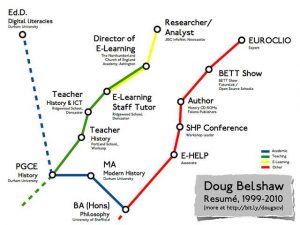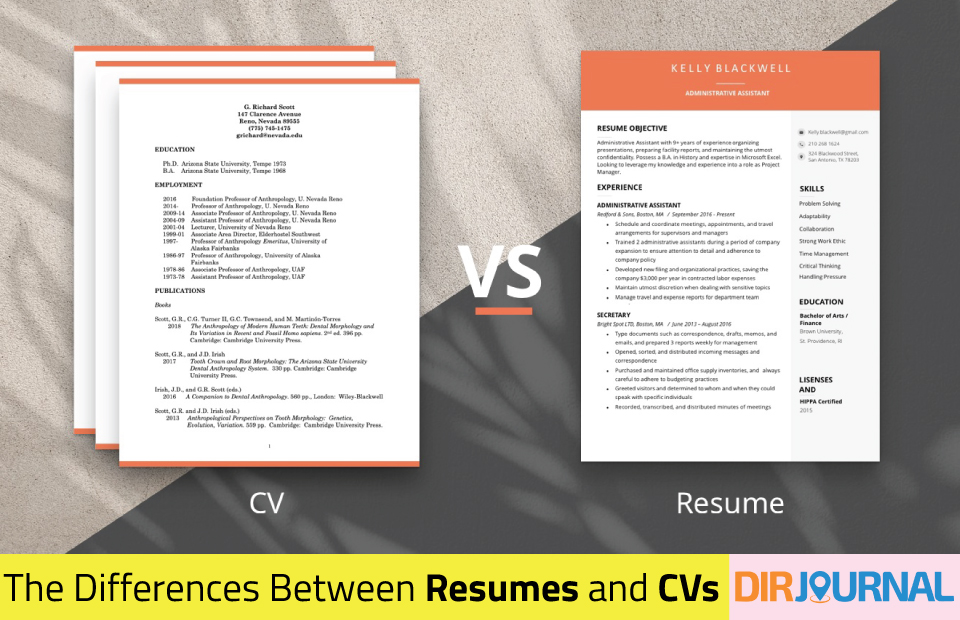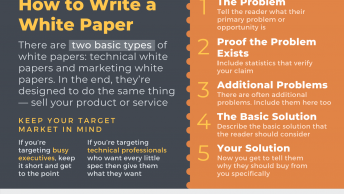
If you’re in the job market, you know you have to send potential employers a list of your qualifications. But those qualifications can be presented in different ways — most notably through either a resume or curriculum vitae (CV). How do you know which one to use? If an employer requests a format that you’re unfamiliar with, can you just substitute the other, or are there significant differences?
Let’s explore both resumes and CVs, and their differences, so you can better decide which to use in your own job search.
What is a Resume?
A resume is a short document (often just one page) providing a job seeker’s education and work history as well as other skills and qualifications for an open position. This document is provided to the hiring party for review and consideration for a job interview.
What is a Curriculum Vitae?
A curriculum vitae is a document (often three or more pages long) that some employers request from job seekers. Like a resume, a CV details the applicant’s educational and work history, although there is often more of an emphasis on academic accomplishments.
Differences Between Resumes and CVs (and When to Use Each)
Overall, a resume and a CV are very similar documents and they both share the same end goal — to help you land a new job. But there are some differences that set them apart. You’ll want to understand those differences so you can deliver your job qualifications in whichever way your potential employer prefers. Making their job as easy as possible can give you a leg up in your job search.
Here are some of the key differences between resumes and CVs:
- The most notable difference between a resume and curriculum vitae is the document’s length. Resumes are shorter than CVs. They’re more of a snapshot of an applicant’s credentials whereas CVs provide more detailed information.
- While resumes often focus more on providing brief work history and where you went to school, CVs emphasize more specific information about your education and other scholarly pursuits. That might include past teaching experience and published research.
- CVs, in the U.S. are used largely in hiring for academic positions (such as teaching and research positions). They’re also often used in relation to scientific industries, such as medicine, or professional industries like law.
- While resumes are generally the preferred format for most U.S. jobs, CVs are more common in other parts of the world, like the U.K. However, this distinction is more limited. A U.K. curriculum vitae for a typical job search is more like a U.S. resume format than what we call a CV in the U.S. for consideration with academic and certain professional positions. For example, a CV in those cases might only be one or two pages long, whereas a CV in the U.S. can easily be three or more pages long.
For some of the basics on creating a job-winning resume, check out this infographic from TopCounselingSchools.org. Then continue below for some of the specific things you would want to include in your resume or CV, depending on the type of job you’re applying for (and its location).
![What makes a great resume [Infographic] The Anatomy Of A Great Resume](http://www.topcounselingschools.org/great-resume/anatomy-great-resume.png)
What to Include in Your Resume
A resume typically includes:
- Your contact information;
- Your objective (what kind of job you’re hoping to secure — such as an executive-level position in a certain industry as opposed to an entry-level job);
- A list of your past work experience (including employer names, position titles, the length of your employment, and a description of your job or accomplishments there);
- Your educational background (including what school you attended, when, and what degree you earned);
- A list of skills relevant to the particular position you’re applying for.
While not always required, you might also include information such as a list of references. You can also opt to state that references are available on request if you want more control over what contact information is given out and when (so a potential employer doesn’t contact your current employer if they don’t know you plan to leave yet for example).
Using keywords in the text of your resume can be important when it gets before a Human Resources person for review. They probably have specific skills and experiences in mind in an ideal candidate, and they’ll be looking for those keywords. Some also use software to sort through resumes initially, and that software can scan for their target keywords as well.
What to Include in Your Curriculum Vitae
Your CV, assuming it’s being used to apply to an academic or research position where they’re more common, should include the following:
- The same contact, educational, and work history background that you would include in a resume;
- Past experience in things like teaching, research, and editorial work;
- Your academic interests;
- A list of past publication credits;
- Any relevant awards, grants, or other recognition you have received;
- Your academic or professional service record (such as boards you’ve served on);
- A list of any memberships you have in professional or academic organizations;
- Any presentations you’ve given, such as at professional or academic conferences.
Resume Samples
Do you need more help writing or formatting your resume? If so, take a look as these sample resumes as a guide.
- 20+ Professional Resume Templates for Any Job
- Sample Resumes by Industry from Monster.com
- Entry Level Resume Samples from About.com
- Sample Resumes from Vault.com
- Samples Resumes and Cover Letters from Drexel University
- Sample Resumes for Students from NYU
CV Samples
Here are a few good examples of CVs that you can use for inspiration.
- CV Samples from the University of Pennsylvania
- Curriculum Vitae Samples from About.com
- CV Examples by Industry from DayJob.com
- Sample Academic Curriculum Vitae from Grand Canyon University
- CV samples from Prospects.ac.uk
Do you have a preference between resumes and CVs? Which is more common in your region or industry? If you’ve ever been in a hiring position, which do you prefer when vetting job candidates? Share your thoughts on the differences between resumes and CVs in the comments below.













